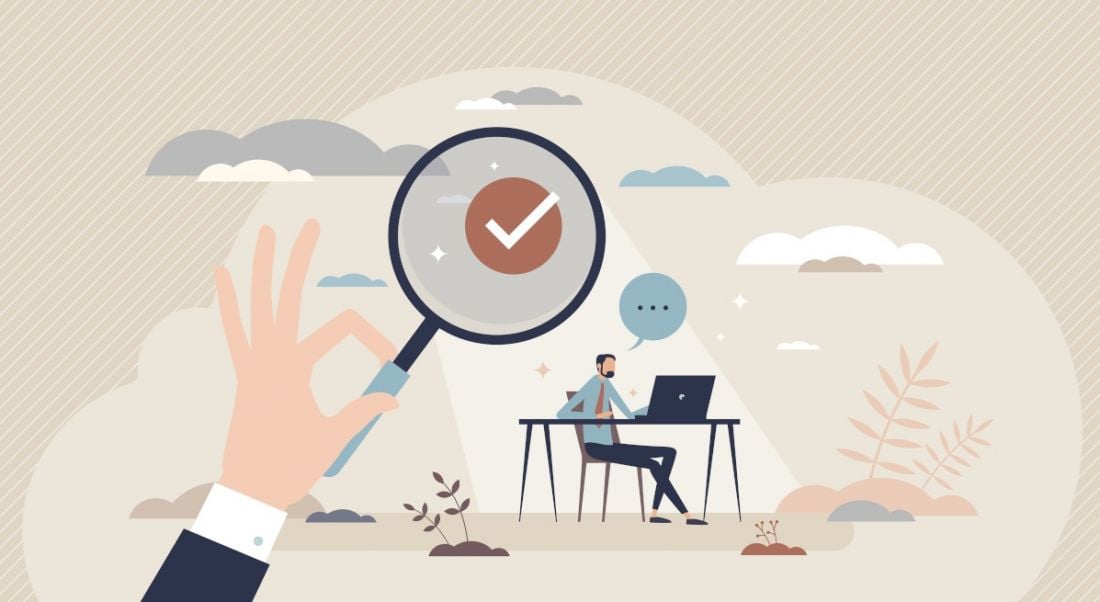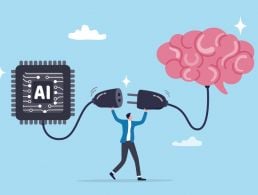While many workers may have considered monitoring an invasion of privacy in the past, research in recent years indicates this perception is changing. Hays’ Steve Weston explores how employers can go about employee monitoring the right way.
From their keystrokes and browsing history to their brainwaves and emotions, organisations are gathering more data on employees than ever.
According to research consultancy Gartner’s 2019 report The Future of Employee Monitoring, only 30pc of companies were monitoring workers in 2015. This had risen to 50pc by 2018 and at the time of the report, the firm predicted this figure would reach 80pc by 2020.
And as more organisations implement monitoring, employees seem to be more comfortable with it – but only if it is used in the right way. Gartner’s report also found that just 10pc of workers were happy with monitoring in 2015, but that this had risen to 30pc by 2018. When employers explained their reasoning behind their data collection, this went up again to 50pc.
Furthermore, there is a strong business case for staff surveillance. “Monitoring can be beneficial in terms of productivity and performance, also the health, wellbeing and safety of employees,” said Edward Houghton, head of research and service design at city transformation business DG Cities. But, he added, monitoring is only justified if it is transparent and fair. If not, it raises serious questions about privacy.
Increasingly however, people are willing to give that up for a benefit, said Brian Kropp, chief of HR research at Gartner in Washington DC. We make this trade-off daily with credit card purchases, social media and app use, so we are more comfortable with it in the workplace. “Employees no longer think workplace monitoring is completely off limits, just a bit uncomfortable.”
Monitor to help, not punish
Developing technology is enabling employers to track workers in far more invasive ways, opening up an ethical minefield. For many organisations, wearable gadgets that glean biometric data are an exciting new area of people analytics, but they also have the potential to erode the already shrinking boundary between work and home life.
“Unless this is done to the exacting high standards of ethical practice, there is a risk it can drive a wedge of distrust between employees and employers,” said Rob McCargow, UK director of artificial intelligence at PwC.
In 2019, staff at the professional service firm volunteered to strap smart watches to their wrists, gathering biometric data on sleep patterns and heart rate variance, and taking daily cognitive tests in a trial, with the aim of raising individual wellbeing and productivity.
Analysing the anonymised, aggregate data, PwC found sleep could affect performance, with a correlation between lower levels of sleep, concentration and the ability to multitask effectively. It is early days, but since each employee has access to their own data, monitoring could become a prescriptive tool for raising their game, says McCargow.
But the biggest benefit is empowering staff to take control over their wellbeing: PwC workers assessed their own stress level via heart rate variance monitoring and if it spiked, could access support such as counselling or a medical assessment.
Meanwhile, McCargow sees a future in which PwC managers crunch the data in aggregated form to improve resource management, bolstering project teams if the workforce seems stretched. “We may be able to run a better business off the back of this.”
Be open, and create a sense of trust
Thomas Kochan is co-director of the MIT Sloan Institute for Work and Employment Research in Massachusetts. He thinks it is reasonable for companies to act on the analysis of employee data with more sophisticated technology, such as artificial intelligence, helping to turn insight into action. “The value of big data is the fast turnaround of problems.”
Employee monitoring can shed light on underperformance. According to Kochan, some manufacturing employees use wearables that track their productivity in real time. If it drops, management step in to diagnose the problem and find a solution, whether that be offering training or adjusting workflow or breaks.
But they should be liable for these decisions. “To maintain the trust of the workforce, managers need to explain how they came to that decision and what factors went into it. Monitoring cannot be a black box,” he said.
He added that employers should be transparent and give staff a say on what data is collected, the method and how it is used. “Define with employees what problem you are trying to solve through monitoring and share the data with the workforce so they can validate it and put it to work.”
Otherwise, organisations run the risk of losing the trust of staff and damaging their mental health. “The dark side of monitoring is it can be unhealthy for individuals to be exposed to excessive levels of surveillance,” said Houghton.
Some employers have taken this too far entirely, monitoring or limiting toilet use. Employers will have to continue reviewing and navigating the ethical line, Houghton added.
In one infamous example, Barclays installed an employee monitoring system that tracked how long investment bank staff in London spent at their desks and warned people against taking breaks for too long. Barclays axed the system in 2020 after a backlash from employees and criticism from privacy campaigners and HR experts.
Houghton also offered a warning for any businesses that think implementing monitoring will be helpful in keeping tabs on employees that have switched to home working during the pandemic of 2020.
“Covid-19 is a challenging time for many, and workers may feel anxious about their jobs and their ability to work at home,” he said. “If employers do have valid concerns regarding productivity, these should be picked up via line management with employees and by looking at outputs and quality. Monitoring should only really be used to complement other practices, as opposed to being a quick fix.”
Jonny Gifford, senior adviser at CIPD, agreed: “Employers should think twice before introducing any kind of monitoring. Our research shows that intrusive workplace surveillance damages trust, has a negative impact on morale and can cause stress and anxiety. There are, potentially, even greater privacy considerations to think about when monitoring home working as well.”
Ensure employee monitoring is legal and above board
The legal line is blurred too. In the EU, lawyers say organisations can process employee data if they prove their justification is superior to the interests of workers.
But as employers conduct their own impact assessment, a potential conflict of interest arises. “You could argue the safeguards do not fully protect employees,” said Daniel Cooper, a partner at law firm Covington who advises clients on data protection.
“But if organisations get it wrong, they get hammered by regulators. The fear [of prosecution] is the deterrent of abuse of privacy.”
In the EU, companies have to adhere to GDPR. If organisations fail to explain why they collect data, or to make sure it is relevant, not excessive, and is up to date and secure, they could be hit with fines of €20m or up to 4pc of global turnover, whichever is more.
Global compliance will mean obeying local privacy laws. In the US, individual states have their own regulations. The California Consumer Privacy Act requires many companies to disclose data collection and its purpose and entitles workers to damages for data breaches.
In a 2018 report, the law firm Freshfields noted that new data privacy regimes were established in China and the Philippines. In China’s case, the new rules mean employers cannot process an employee’s personal information abroad without explaining the purpose, scope, contents and recipient.
Furthermore, companies that are found to have publicised private data or disclosed an individual’s private information in writing or orally without the individual’s prior consent, are considered to have caused a civil injury to the employee, which may constitute a criminal offence.
Ensure that it is a two-way street
Above all, companies need to get employees on board. A global 2019 survey by Accenture found that 89pc of workers were open to monitoring, but only if it benefitted them.
Companies that collect data responsibly could see revenue growth of up to 12.5pc higher than companies who do not, Accenture said, because of employee trust that impacts productivity.
But only 30pc of executives surveyed by the firm were very confident they were being responsible. And 55pc said they do not ask for employee consent, though in many jurisdictions consent is needed to monitor biometric data.
For MIT’s Kochan, this is “unethical management, it is an invasion of privacy, it breeds distrust in the workforce,” with data scandals like Cambridge Analytica making people more sensitive to privacy.
There is also a risk that employees feel pressured into going along with surveillance, according to Nick McAleenan, a partner at JMW Solicitors. “How can employees give proper consent when it could affect who gets the next promotion or pay rise? There is an inequality of bargaining power.”
Employees often fret their employer could use their data against them, he added. And indeed, PwC’s pledge to anonymise and aggregate staff data helped to win support for wearables: applications to the pilot were oversubscribed within minutes of opening.
Current evidence suggests other organisations will follow suit, gathering data through ever more invasive means with the aim of raising performance, productivity, health and happiness.
But manifold legal and ethical challenges need to be overcome first. Those who succeed will involve employees every step of the way. Employee monitoring cannot substitute for good management.
By Steve Weston
Steve Weston is the chief customer officer for Hays. A version of this article originally appeared on Hays’ Viewpoint blog.
10 things you need to know direct to your inbox every weekday. Sign up for the Daily Brief, Silicon Republic’s digest of essential sci-tech news.




